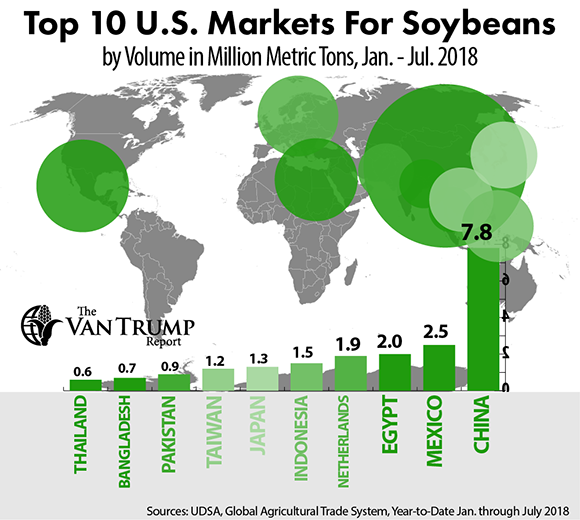
Soybean bulls are hoping the bears might be running out of bullets. It sounds like Washington might only have one more major tariff bomb in their arsenal. At the same time a record setting U.S. crop has been well advertised and the trade has perhaps already started swallowing thoughts of the balance sheet getting larger.
There's some bullish weather headlines circulating as well, with weather forecasters calling for perhaps a heavy frost prior to October 1st for parts of the Dakota's and Minnesota.
Bulls are also talking about China buying more supply from Argentina, and in turn Argentine crushers buying more U.S. soybeans in the days and weeks ahead. I should also note, there's more talk and rumors that the Argentine government might be forced to ramp back up their export taxes on soybeans and meal through 2020 to help further fund their national budget and repayment of loans. If that were to play out it could work to limit Argentine exports and push some of that business back to the U.S.
In Brazil, it seems like the new freight rates and overall transportation hiccups have slowed their movement of soybeans. There's also continued uncertainty surrounding the upcoming presidential election in Brazil. The concern is if the far-right candidate who is currently in the lead actually wins the election, it could create massive social unrest and uncertainty across the country. That could eventually spill over and create further logistical complications and make it more difficult for exporters. This might be a stretch, but I've also been hearing that producers in both Argentina and Brazil, while planning on planting record acres, might not be willing to spend as much on inputs in 2019. There's some talk that the devaluing of both the Argentine and Brazilian currency in comparison to the U.S. dollar could work to limit buying power of fertilizer, chemicals, and pesticides.
Hence, talk of perhaps some yield drag in 2019. Obviously a lot will depend on weather, but certainly interesting to think about all of the moving pieces and how much more expensive some of the dollar based inputs could be in 2019. Even here at home, when looking out on the horizon, I'm seeing steeper input cost. Bears continue to point to perhaps a much longer-term trade battle developing between the U.S. and Chinese. In fact, starting to hear more talk of perhaps little movement or headway with Chinese trade negotiations until early-2019.
From a technical perspective, most are talking about stiff nearby resistance up between $8.35 and $8.50 per bushel. Support is thought to be somewhere between the recent lows of $8.12^2 and major psychological support at $8.00 per bushel.

The opinions of the author are not necessarily those of Corn+Soybean Digest or Farm Progress.
About the Author(s)
You May Also Like






